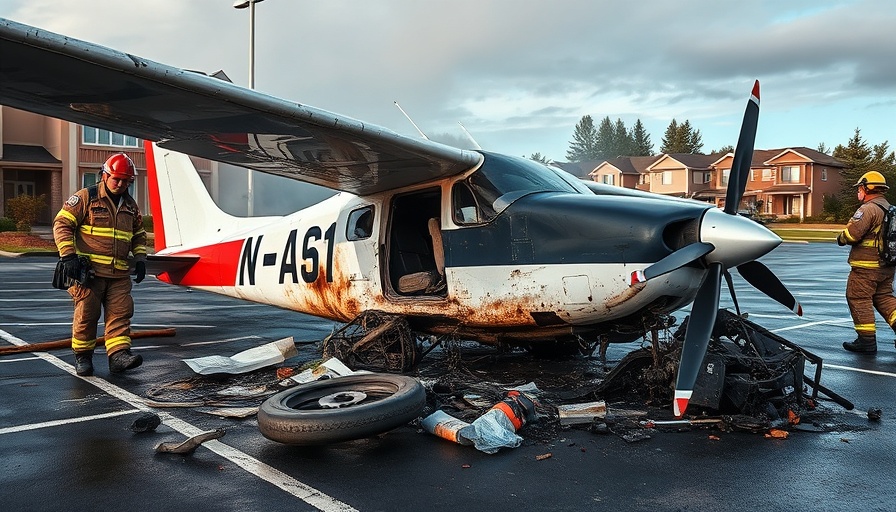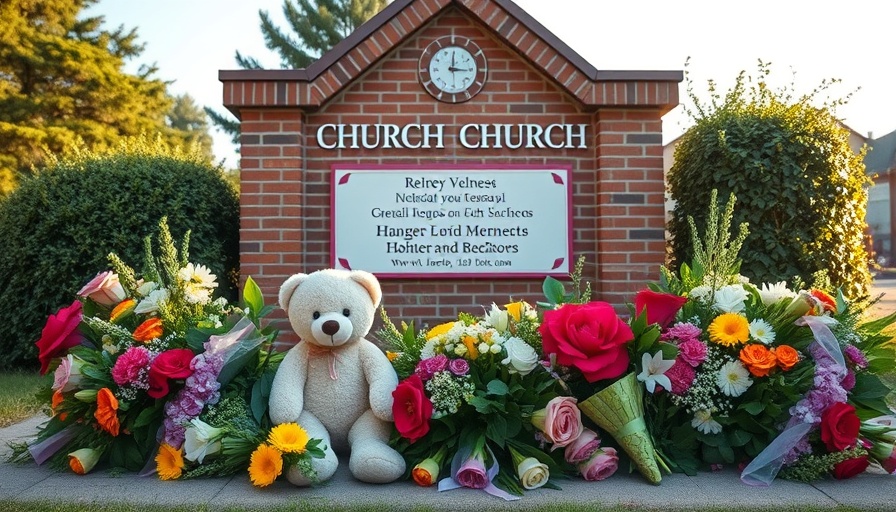
A Near-Disaster at Lancaster: Plane Crash Overview
On March 9, 2025, a small single-engine Beechcraft Bonanza crashed in a residential area in Manheim Township, Lancaster County, just shortly after its departure from the Lancaster Airport. The aircraft, which had five individuals on board, encountered severe complications shortly after takeoff, resulting in a harrowing fireball that engulfed the plane post-impact. Fortunately, all five occupants were transported to local hospitals with injuries, though no fatalities were reported.
This incident, which unfolded at approximately 3 p.m., is a stark reminder of the risks associated with general aviation, demonstrating how quickly a routine flight can turn into a crisis. Eyewitness accounts detail alarming moments prior to the crash where the aircraft could be seen sharply descending in a perilous maneuver only to crash almost directly next to the Brethren Village retirement community.
Flying Risks: The Threat of Mechanical Failures
Mechanical issues are a frequent concern in aviation, particularly in single-engine planes, which are notably susceptible to technical failures. In this instance, flight tracker information showed the aircraft signaled an open door shortly after takeoff, requesting to return to the airport. A voice from the cockpit can be heard on air traffic control recordings expressing distress minutes before the crash. Investigators from the Federal Aviation Administration are currently looking into whether this mechanical issue could be tied to the crash's cause.
This situation introduces a broader discussion about the safety and maintenance standards for general aviation aircraft, particularly the aging fleet of single-engine planes rooted in decades of aviation history. With regulations intact, many argue enhancements in monitoring systems could potentially mitigate the risks significantly.
Impact on the Community: Safety in the Aftermath
The crash's locale is a vital factor in this incident, occurring within a retirement community where potential human casualties could have escalated dramatically. Fortunately, nobody on the ground was injured. Local officials expressed relief at the outcome, with Manheim Police Chief Duane Fisher stating, "A plane crash where everybody survives and nobody on the ground is hurt is a wonderful thing." Such sentiments reflect the importance of immediate response teams, which managed to control the fire and manage the situation efficiently; emergency responders were on the scene within three minutes.
Lessons to Be Learned: Moving Forward
This crash not only reiterates the importance of safety measures in aviation but also introduces key discussions about regulatory reforms and operational safety checks that could better serve the aviation community. Local governments and federal authorities must come together to reassess existing protocols addressing aviation safety.
Furthermore, the incident casts a light on how critical community response teams are, showcasing their readiness and dedication that ultimately prevents further calamity. Enhancements in training for local emergency responders to handle similar emergencies effectively could be beneficial.
Broader Implications: Flight Safety Regulations
This event raises several critical questions about flight safety regulations and the need for compliance checks on aircraft systems, especially for older models like the Beechcraft Bonanza, which was introduced in 1947. As technology continues to develop, aviation regulations must evolve to ensure compliance with modern safety standards. Ensuring aircraft are fitted with advanced monitoring systems and safety features such as effective stall prevention and response mechanisms could reduce risks significantly.
Moreover, a comprehensive review of pilot training programs may be essential, emphasizing emergency response capabilities as pivotal aspects of curriculum; thus, readying future pilots for unexpected malfunctions and crises.
Conclusion: The Importance of Vigilance in General Aviation
As communities become more accustomed to aviation activity with the rise in popularity of small personal aircraft, understanding the inherent risks becomes paramount. This event serves as a sobering reminder that vigilance in aircraft operations, coupled with stringent safety protocols, are essential for ensuring passenger safety. In moving forward, prioritizing the well-being of airline passengers requires both rigorously enforced regulatory measures alongside comprehensive engagement with the local community and the aviation sector.
Stay informed about aviation safety measures and community efforts for enhancing safety standards in general aviation. Together, we can create a better, safer air travel environment for everyone involved.
 Add Row
Add Row  Add
Add 




Write A Comment